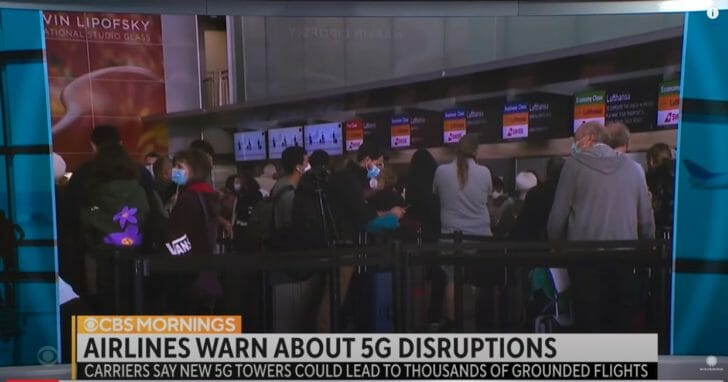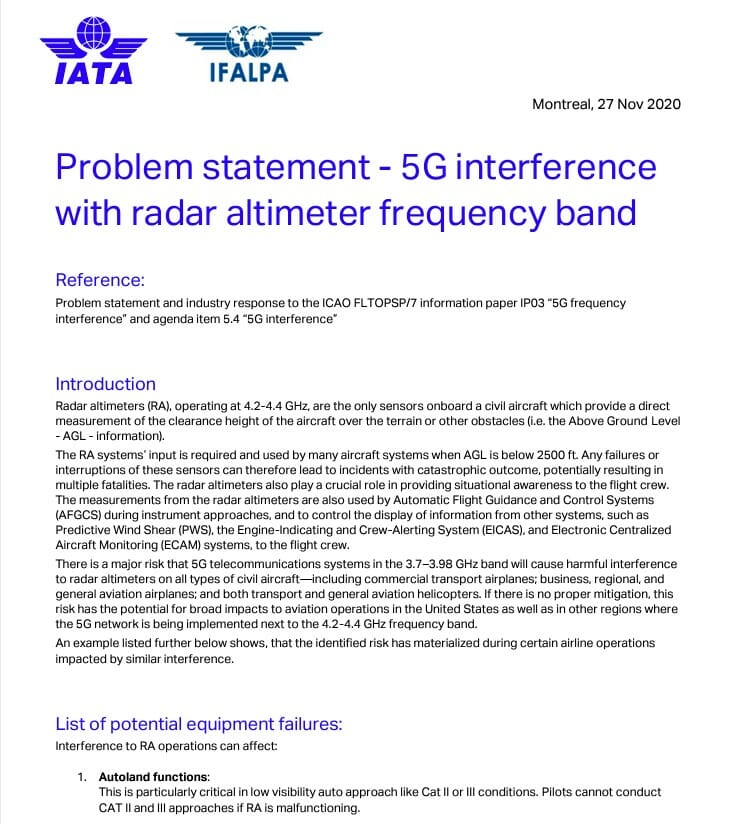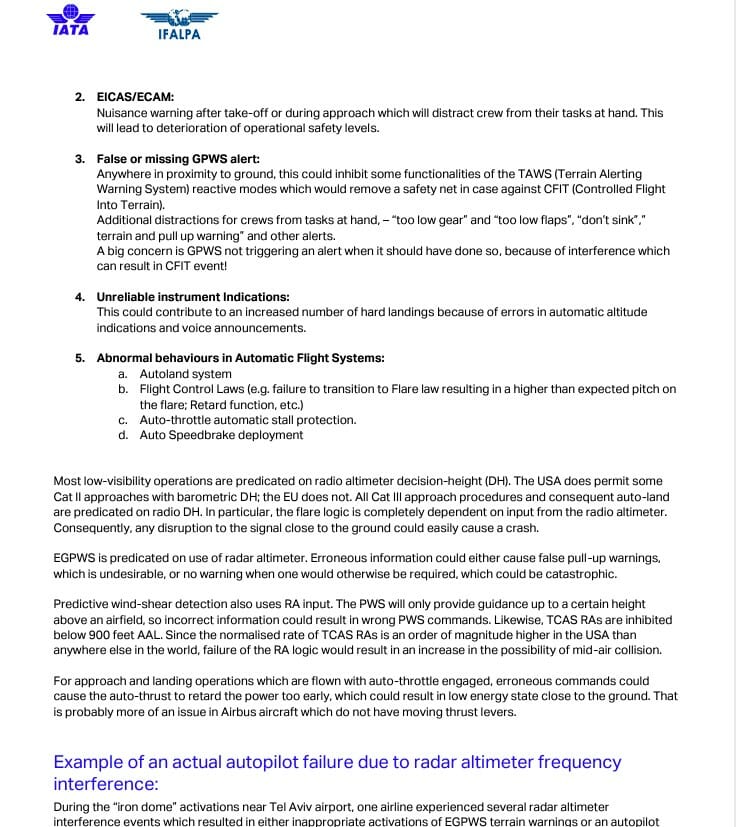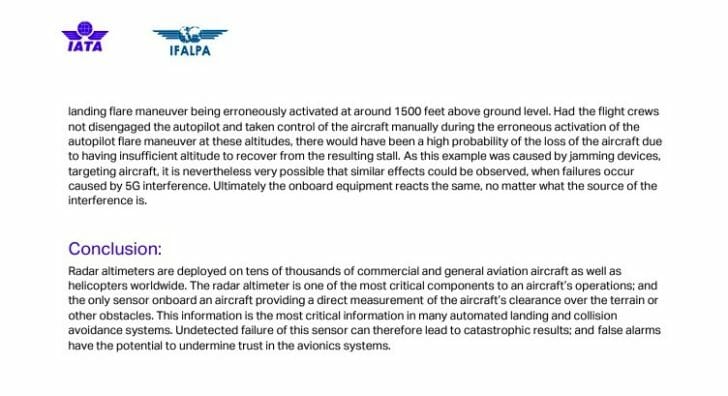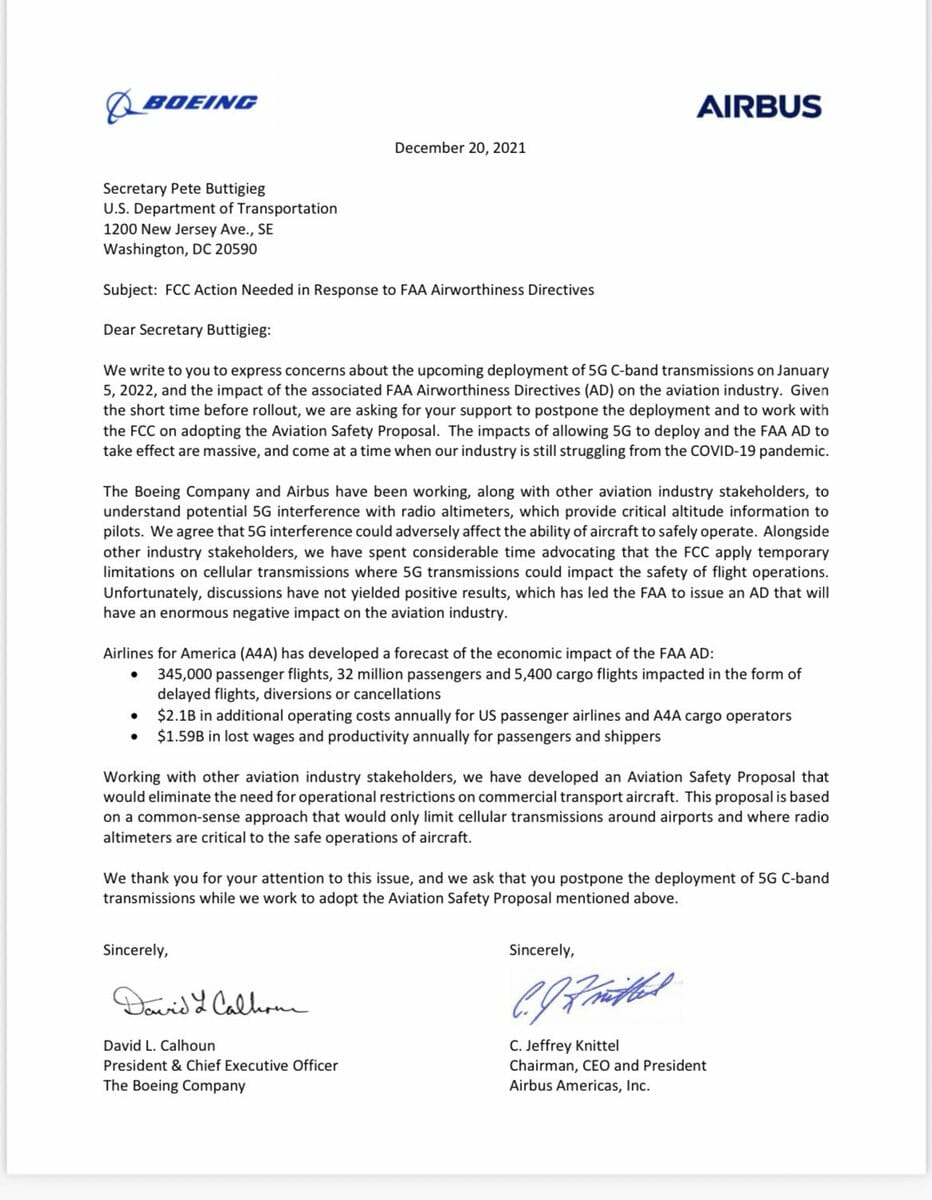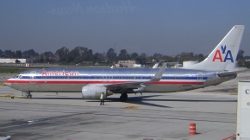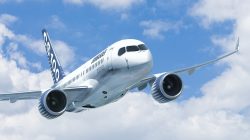Boeing and Airbus are requesting a delay in the rollout of the new 5G cellphone “C band”. The issue is a concern that the new C band 5G frequencies are so close to the frequencies used by aircraft radio altimeters.
The Problem
The new C band, 5G cellphone transmits on a frequency spectrum from 3.7 – 4.2 Gigahertz (GHz). The radio altimeters used on airliners transmit on a frequency spectrum of 4.2 – 4.4 GHz. Radio altimeters are used by aircraft during the final approach phase of landing. These altimeters are used from altitudes from 2,500 feet above ground level to the runway. These altimeters are more precise than the barometric altimeters used during flight. There is no buffer spectrum separating the new C band 5G frequencies from the aviation frequencies. These new 5G frequencies are scheduled for rollout on January 5, 2022. It is possible for spurious 5G signals that could conflict with the frequencies used for radio altimeters. If the impact is what airlines say, it could result in up to 1,000 flights per day either delayed or cancelled.
Radio altimeters make audible callouts at altitude intervals. There are two critical calls where the captain has to take action. There is a final landing decision point to be made, usually around 200 feet above the ground. The altimeter would call out 200 and the final decision is made to land or go around. If the pilot commits to landing, the captain will say “continue”. The other point is usually about 20 feet above the ground. The altimeter will say “retard, retard, retard”. At this point, the pilot flying will flare the aircraft (nose up) and cut the throttles.
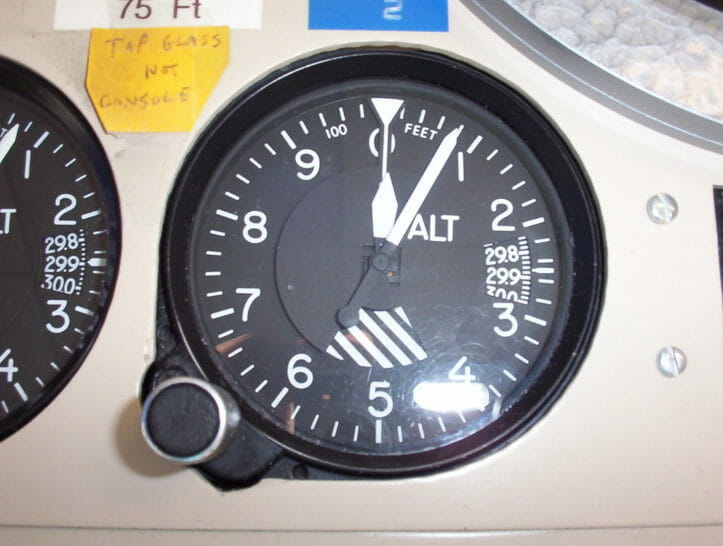
This Is Not A New Concern
The aviation world has been concerned with possible interference for some time. The International Air Transport Association (IATA) studied the issue with a problem statement detailing their conclusions on November 27, 2020.
Competing Federal Agencies
Radiofrequency bands are determined, controlled and allocated by the Federal Communications Commission (FCC). Aviation Safety is the responsibility of the Federal Aviation Administration (FAA). It may be possible that these two Federal agencies are not working with each other. What we have is a situation of technology versus bureaucracy.
The FAA said that “it believes the expansion of 5G and aviation will safely coexist and is working closely with the Federal Communications Commission and wireless companies”.
Scott Kirby, CEO of United Airlines suggests that the FAA and the FCC should be locked in a room and agree on a way to do this without impacting aviation.
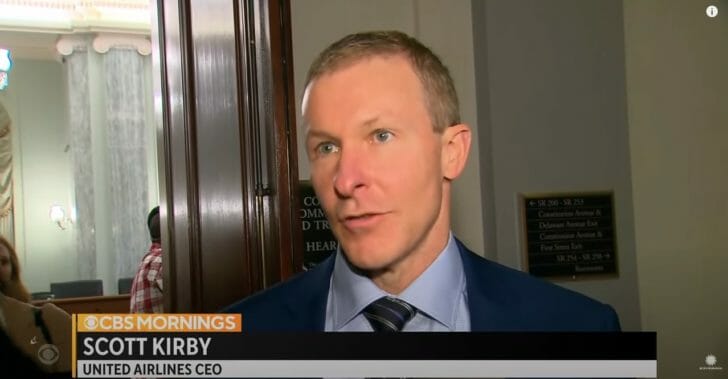
The Letter To The FAA From Airbus And Boeing
On Monday, The CEOs of Airbus and Boeing sent a letter to the U. S. Department of Transportation. The letter is requesting that the FCC delay the rollout of the new C-band 5 G frequencies until the FCC and FAA can work on adopting the Aviation Safety Proposal.
What The Cell Phone Carriers Say
The cell phone carriers AT&T and Verizon are at the center of this dispute. They have said that they will reduce the transmission strength of cell phone towers in the vicinity of airports. The wireless phone companies in total have spent about $80 billion to purchase these new C-band 5G frequencies from the FCC. Their position is that they don’t want any more delays on rolling out the new 5G frequencies.
Final Thoughts
The aviation industry is concerned about the new C-band 5G frequencies conflicting with aircraft radio altimeters. These radio altimeters are vital in letting pilots know the aircraft’s height above the ground on final approach to land. The request by Boeing and Airbus to the U. S. Department of Transportation is to seek a delay in implementation of these new frequencies is perhaps warranted when you have dueling Federal agencies involved.

